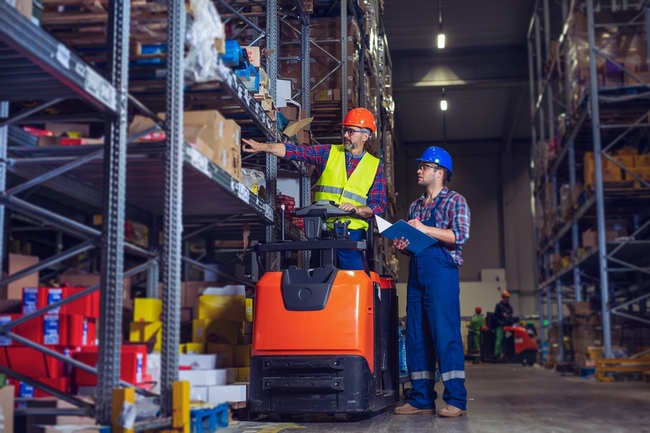
Each mobile workstation cart is a powerful tool for improving productivity in any warehouse - but only when they're used correctly. These guidelines establish a baseline for using the carts and optimizing warehouse activities in ways that produce measurable results.
Step One: Assigning Areas
The greatest strength of a mobile workstation cart - its ability to be anywhere it's needed - is also one of its greatest weaknesses. Quite frankly, if nobody knows where the cart is or who's using it, then it could take them precious minutes to get things back in order and actually complete their job. Over time, those minutes can add up to a serious drop in overall productivity, particularly in fast-moving warehouses where every moment counts.
The best way to start improving productivity is by creating a very specific area that each cart belongs to - work along aisles and longer fields of view, with an emphasis on the ability to quickly look around and find the cart in question. Employees should understand that carts are never to be taken out of their assigned areas without explicit permission from a manager - this will ensure that everyone knows where to look at any given time, reducing the amount of time they spend fetching the station from another work site.
This is also a good time to focus on basic safety with workstations. Each workstation should never be placed closer than two lengths of a forklift to the edge of any aisle. This will ensure that anything coming around the corner has time to see it and maneuver to avoid it - consider marking the floors with tape, paint, or some other type of identifier so people know how far the cart is allowed to move.
Step Two: Color-Coding the Carts
This may sound simple, but the best tricks usually are. Color-coding each station is a good way of identifying carts at a distance, particularly if your warehouse uses several different types. If possible, completely cover the left and right sides of the workstation in a solid sheet of easily-visible color. Primary colors tend to work best, especially if they contrast with everything else in the warehouse - though all workstations should avoid matching the color of any larger pieces of equipment (such as forklifts) that might be used. Remember, the goal is instant, easy recognition of each station - competition with anything else in the warehouse should be avoided at all costs.
Multiple colors can be used to designate different types of carts - for example, a cart loaded with a printer may be marked with blue, while a standard data-entry cart may stick with red siding. Units of the same type should share the same coloring.
Step Three: Exercise Programs
An investment in the health of employees is an investment in their future - but it can also have a measurable benefit for productivity as employees find themselves needing to pull around heavy carts for a significant portion of their day. By ensuring that all employees who handle the carts are physically fit, it's possible to ensure that they don't drag their feet while moving the cart - and a few minutes an hour saved by each employee could easily equal ten thousand dollars or more of increased productivity each year.
When done correctly, an employee exercise program could quite literally pay for itself with various benefits throughout the workday - and the reduced costs for insurance will only add to the benefits that adding a mobile workstation cart can provide.
Step Four: Using Multiple Carts
While larger versions of the mobile workstation cart can handle plenty, there may be times when it isn't a practicial option to load every type of device onto a single workstation. This is when using multiple carts comes into play, and there are several ways of effectively keeping them together - after all, minutes spent running back and pulling a second cart are minutes wasted. The first technique involves physically connecting two (or, rarely, three) carts together in a single chain that an employee can pull to their destination. Alternately, employees who work in groups can each take one of the carts, which is more ideal if the carts don't always need to be used together.
Step Five: Eliminating Redundancy
The best use of a mobile workstation cart comes from truly understanding how to use it - and that means changing warehouse policies from the top down. Most locations have found that the largest benefit comes from the elimination of redundant work - repeatedly moving packages to different areas, writing things down in one place only to key them in later, and similar pieces of work. Every warehouse is different, so there are no universal solutions - but any warehouse can work to eliminate redundancy by taking a careful look at current policies and asking if a mobile workstation cart could be used to make things easier.
Do you want to give portable power a test? We have a brand new power pack, the PowerPack Ultra Series. Take a look at our NEW power pack here:











